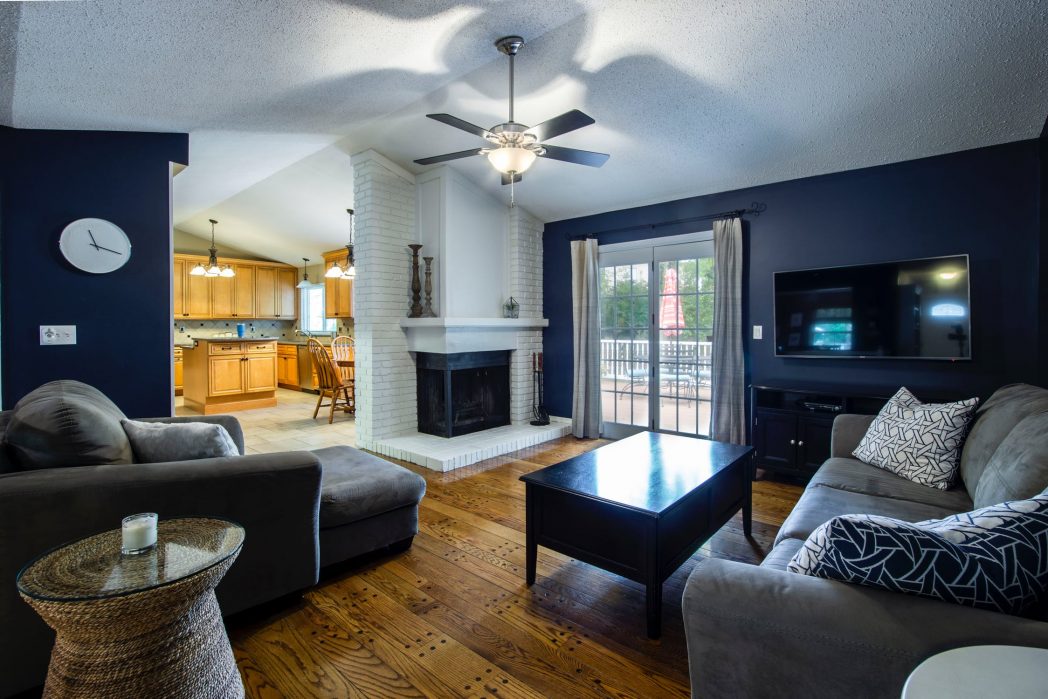1. Space
Space is the most important element in interior design, taking a role as a foundation on the entire interior design plan. When talking about space, people will think about 3-dimensional space with 3 dimensions: length, width, and height. Space can be split into two categories as Positive space (space filled with objects like furniture or décor items) and Negative space (empty or open space). Keeping a balance between negative spaces and positive spaces is essential to avoid overcrowding or skimping.
2. Line
Horizontal, vertical and dynamic lines help to shape a room and guide the eye. Creating lines using the room’s furnishings and structural design can form harmony, unity and contrast. While horizontal lines give a sense of stability, formality and efficiency to the space, vertical lines evoke feelings of freedom and strength. Dynamic or angular lines provide energy and movement and can be seen on structures like stairs. An interior designer must know how to utilize these lines to define the forms, another important interior design element.
3. Form
Form is the shape in general. In other words, it relates to the physical form of anything that is three dimensional. Forms can be created by combining two or more shapes and can be accentuated with the involvement of texture, patterns, and colors. Geometric (artificial) and Natural (organic) are two types of form. Forms also can be categorized as open and closed. Adding forms of similar shapes can create harmony and balance while adding too many different shapes can have a confusing result. A space is typically more pleasing if the dominant form is repeated in minor objects throughout the room.
4. Light
Light is one of the most obvious elements of interior design. Either natural or man-made, without light other elements namely color, texture and pattern have no significance at all. Light sets in the mood and ambiance into a living space and highlights every other element including space, line, and forms. While the smart placement of doors and windows should take care of the natural light, man-made lighting is broadly divided into the categories of task lighting (defined purpose), accent lighting (emphasizing objects) and mood lighting (adding ambiance).
5. Color
Colors establish an aesthetic connection between objects and set the mood. Each color has three distinct characteristics namely Hue, Value and Intensity, and an interior designer must be well aware of these characteristics to perform various permutations and combinations. Colors are broadly classified into Primary and Secondary colors and also sub-categorized into Tertiary, Complementary, Analogous and Monochromatic colors.
6. Texture
Texture adds depth and interest into a living space and defines the feel/appearance and consistency of a surface. Texture is broadly classified into two types – Visual Texture where the texture is only visible and Actual Texture where the texture is both seen and felt. Anything that has to do with textiles such as pillow cover, bedspreads or anything to do with covers like drapes, wall paint or wallpapers have a texture. While there must be a dominant texture to define a mood, a contrasting texture must also be included to avoid monotony.
7. Pattern:
A pattern is created by the use of a repetitive design and can be found in wallpaper, soft furnishings, rugs and fabrics. Patterns come in various types, such as stripes, geometric, pictorial, organic, motif and animal prints. In regards to style, it’s vital to know what category the pattern falls into to ensure that the essence of the room is maintained. For example, for traditional style rooms, incorporate organic, floral prints. For a contemporary touch, geometric and abstract prints should be experimented with. Patterns add the elements of continuity and smooth transition in a living space.

